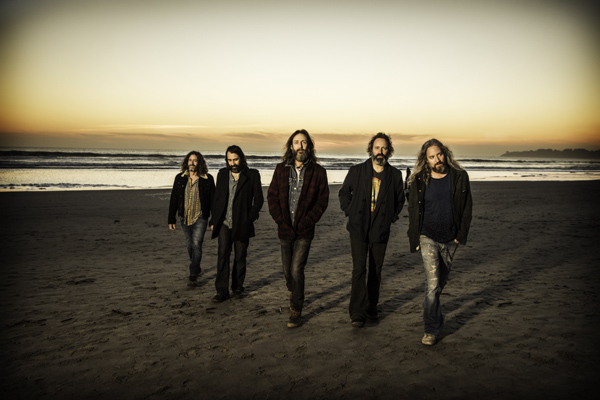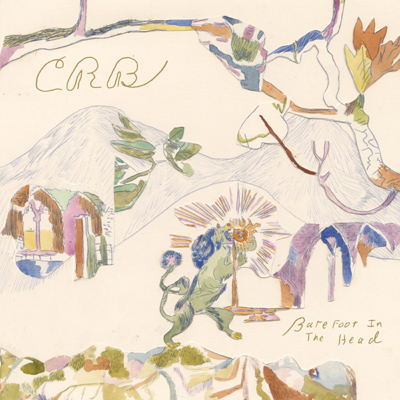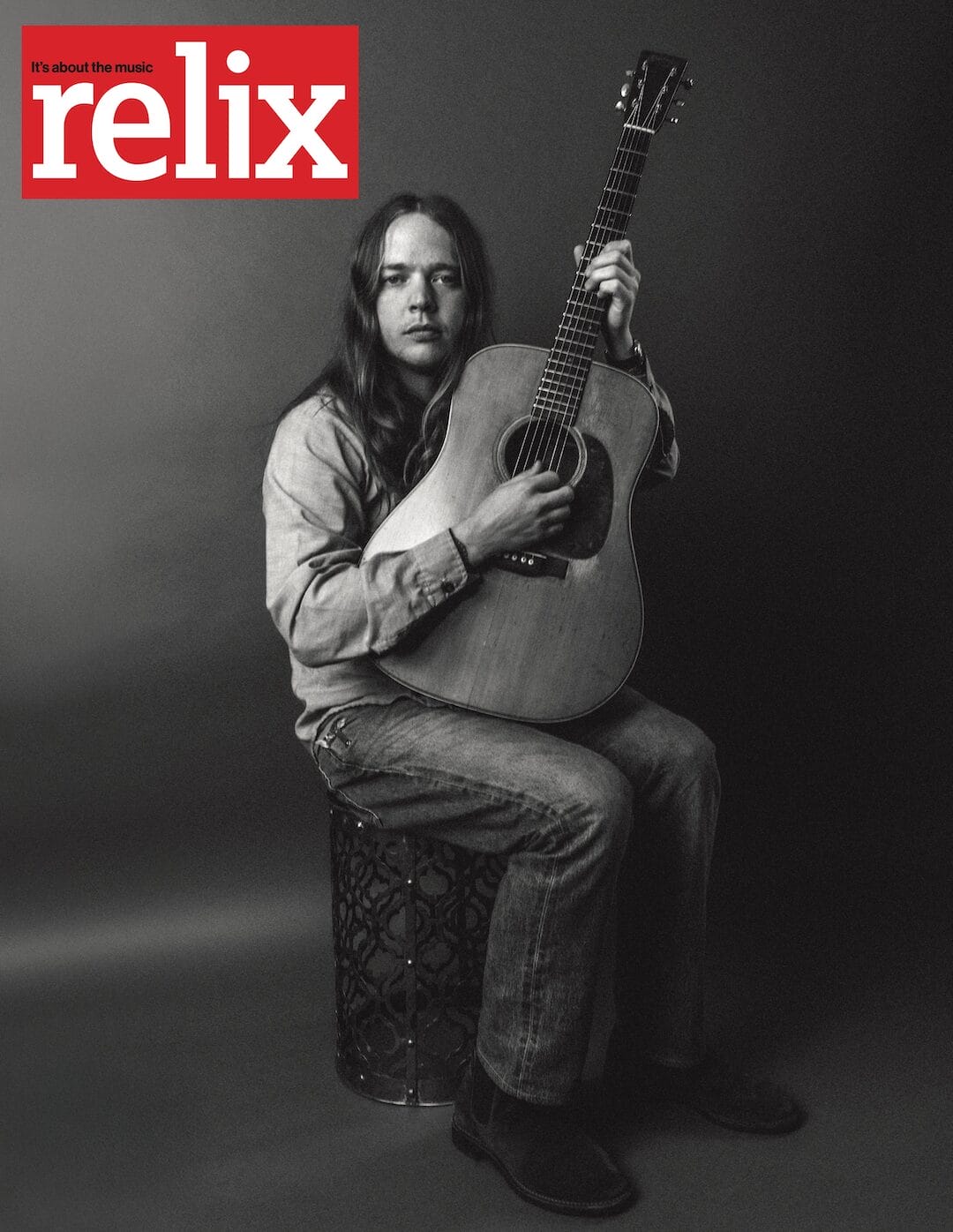Track By Track: Chris Robinson Brotherhood _Barefoot in the Head_

“I’ve never been interested in hit songs. As a matter of fact, most bands’ biggest hits are the songs I would never play,” Chris Robinson declares, with a laugh. “That’s just me. It’s not being difficult; it’s just the way my mind works or where the connection is. Writing songs was always my entry into this world of being a musician, and of all the ups and the downs and the goods and the bads. It all started because I wanted to write. It’s funny, at 50 years old, you come back around. And again, that’s the fuel, this material, for any musician worth his weight when given new music or a new composition—at least in our band.”
This is what prompted the Chris Robinson Brotherhood to re-enter the studio in late 2016 to record the followup to last year’s full-length album, Anyway You Love, We Know How You Feel, and its companion EP, If You Lived Here, You Would Be Home by Now. These sessions were the first to feature the CRB’s current roster, which also includes co-founding guitarist Neal Casal and keyboard player Adam MacDougall, along with the new rhythm section of drummer Tony Leone, who came onboard in 2015, and bassist Jeff Hill, who joined in 2016.
“We were really in a great place when we finished the last record, our first self-production. It was a really good energy,” Robinson expounds. “I came home from those Anyway You Love sessions, and I just kept writing. It seemed like my acoustic guitar was at the forefront. I didn’t send any songs around to anyone or anything but, by the fall, I was sitting on 12 or 13 things that weren’t complete. We were in a harmonious place after having Jeff join the band, spending another year on the road with our rhythm section and knowing that these are our dudes. So we made the decision to record. One idea I thought would be cool was not to bring any of our road gear—no amps or guitars that we used on tour. That set us off on a little bit of a different thing.
“If we didn’t have the material or the imagination to be there, then I suppose we would have just said we could keep touring but, as a communal group, our perspective is: Every song’s like a new elixir. Every song is a new shape or texture or color or phrase we can use in our stories. We have the unique opportunity to create something on the run, in a way. We don’t have nostalgia, we don’t have hit records and we don’t have, ‘Ahhh, remember in the summer of ‘95…’
“So, Barefoot in the Head is representative of this freedom we have to be creative. Ultimately, as musicians, that’s what we’ve craved our whole careers, our whole lives. Maybe we all can’t drop out and move to a commune in Oregon, but we can do it in our music. We can do it in our mindset; we can do it in our business model. I think that’s the energy and where the creative heart still is in this band.”
BEHOLD THE SEER
“Behold the Seer” is like a two-part song, but it’s quintessentially CRB. The demo name of this song was “Shit Kicker.” It was more rootsy country. I had the intro riff and my little verse parts. Then, instantly Neal wrote the chorus and, while we were playing, I said, “Adam, what do you want to do? It’s your solo—what do you want to play over?” So he went to his chords. The song came together very quickly. It’s a song about being able to have your moment to focus through the fog or clarity with the maya around us. And how some people almost have special eyewear to be able to see through whatever sort of trance we’re in.
SHE SHARES MY BLANKET
This is my favorite song on the record. I wanted to write an updated, more romantic version of two people who are in love and moved somewhere to grow weed or something. Their backstory wasn’t important, but their love affair was. I wanted the words to feel like a Robert Altman movie, in a way.
The song is made up of scenes. I wanted them to play out over the music, as if in your mind, you were watching a movie. The first bit, “Barefoot through the crocus among the dreaming trees”—that’s the opening scene. That’s the credits where this beautiful girl is in the woods walking through the crocus flowers. But then, if it were a script, it would say, “Scene II: Inside the Cabin,” and that would be another scene where they’re in their simple dwelling and she’s combing her hair. It kind of moves from there and starts in the autumn and ends in the winter. So it takes place just over a few months—this love affair is going on with these people. The instrumental section in the middle, which I believe Adam orchestrated, fits perfectly. It’s the montage of what’s going on in their lives during that part. It’s a real visual song to me. It opens with this beautiful girl walking through the forest, and the camera should be moving in on her. Some songs aren’t like that at all, but I see this one like a storyboard. I’m visualizing the image and writing it down in a script form, at least to a weirdo like me.

HARK, THE HERALD HERMIT SPEAKS
This song would be the complete opposite, where we’d have to find a different director. It’s more stream of consciousness. I love Bob Dylan. To me, he’s still the songwriter’s poet numero uno. He’s still on the apex. I love when he writes a song that has got a lot of words, and he’s letting them avalanche out of his mouth. This is another one of those rare tunes I had already finished, so I had the whole thing. It’s just a kaleidoscopic, strange little song. I don’t really know what it’s about or what it means. I just think it’s visions from a stranger, wandering the earth.
BLONDE LIGHT OF MORNING
“Blonde Light of Morning” is a meditation on the things we can be responsible for, the stuff that’s in our control. We can be in control of our perspective; and then there’s stuff that’s out of our control. The anxiety and chaos, the fear and ignorance—that’s about our perception of things.
If you perceive everything to be dark, if you perceive everything to be hopeless, then that’s what you’ll get. If you can perceive in a more gentle way, in a more humane way, you still have to weather the same storms and the same slings and arrows, but you’ll get what you make of it. I like for this song to represent a calm place in the storm.
DOG EAT SUN
“Dog Eat Sun” represents the alchemical process of enlightenment. I have these “little songs” that are just verse, chorus and maybe a little more, I don’t know how to describe them. And we have an opportunity, when we make a record, for something like “Dog Eat Sun.” I like the idea of these other little smaller things that are living studio things. These are things that just happened in the studio, so we wouldn’t necessarily ever have to go out and play “Dog Eat Sun” live or the way we recorded it.
I had this strange apocalyptic vision for this song but, again, was saved by the universal one. The cosmic consciousness is a part of that song. In a strange way, there are these little signposts throughout the record of otherworldly activity.
BLUE STAR WOMAN
“Blue Star Woman” is a little bit tongue in cheek. The images are kind of outrageous—some woman looking crazy on top of the stairs with a flower in her mouth because she has nailed the head and right hand of her man to the door of her house. The postman and the neighbor on the lawn are saying, “More! More!” It’s just kind of a dream song. There’s the part about her pillow being wet and she wanted to blame it on one of her pets—“I said, ‘Do you have a cat?’ She said, ‘Why, no, not yet.’ And wouldn’t you bet when out from under her dress…”
But we don’t know what’s under her dress—it could be anything. It could be a computer, a very small man from a spaceship or some egg salad. We don’t know. It’s always been my style in some respects; I’m never going to make it super easy. There has to be something obtuse or something in the imagery that’s different. Again, when I was a kid and heard Bob Dylan say, “Jewels and binoculars hang from the head of the mule” [in “Visions ofJohanna”], if you asked five or six people what that means, they would all say something different. Is your interest in dreams? Do you have interest in mythology? Do you have interest in the esoteric? Do you like the language of manuals or something? [Laughs.]
I always want my lyrics to be open-ended in terms of how people interpret them, how they translate them into their own scenes. Obviously, the juxtaposition with the music should be the catalyst. That’s the alchemic catalyst because they have to coexist in a very specific way for it to be interesting and dynamic.
There are rules to poetry, but any great poet has broken the rules. It’s that way with anything, isn’t it? For people who are interested in technology and business, aren’t the most successful people always the mavericks who are
on the outside looking in? I digress because we live in a time where the purity of that is diluted in the poison of status and success.
But Bob Dylan has never cared if you get it. Again, out of all the poignant lyrics and all the amazing stuff in “Isis,” he says, “I was thinking about diamonds and the world’s biggest necklace.” I mean, I want to see the world’s biggest necklace. I’ve never seen that fucking thing—I want to see it!
HIGH IS NOT THE TOP
Sometimes I will write a little bluegrassy, folky, bluesy song that’s just so simple. And I’ll play it for everyone and Neal will respond, “Dude, that’s it— let’s just do it.” I love that he’s always really positive about a song like that.
Tony’s been shredding on his mandolin, and Neal’s been adding all these other instruments to his repertoire. So this little folky morality tale is a great vehicle for everybodysound of that instrument, you can hear everyone playing to the vibes in the room. In that sense, it’s a super magical little song.
GOOD TO KNOW
I had the little verse riff, and that’s all. It’s so funny because, the first day of tour last year—Jeff’s first show—we were setting up and soundchecking. I don’t even remember where we were. But I just started playing the first riff, I didn’t have a melody or anything. And then, Tony and Jeff just kind of picked up on it and Adam, who wasn’t even set up yet, just started playing along. So I told everyone, “Keep playing, don’t change” and I took my phone out and gathered a minute and a half of it. I didn’t play it for anyone for the rest of the year. Then we got to the studio and, one morning, I pulled it out and was like, “This is the next one.” That’s all we had. So we started jamming on it.
We came up with the arrangement and recorded it without any vocal melody or anything. It was the very last thing that I wrote and sang actually. But once we were up and playing, the chorus just fell in, and then Adam came up with that middle section and the outro. If you allow the muse into your presence, she will pay off. When you are open and everyone wants to elevate this piece of music to something we’re excited about, that’s what the creative process feels like. It’s like, at least for us, you’re putting all this stuff together. It happens very fast.
For the lyrics, I just wanted to write a positive song. It’s a sweet lollipop with a melancholy center because isn’t life like that, really? It’s funny, I always write that way. Duality is important to me. I think my writing has always had that to it. My darker songs and my sadder songs can’t always be horrible. There has to be a light at the end of the tunnel. In my happy songs and in my songs of joy and more positive scenes, I always have to put a bit of the melancholy, even if it’s just subliminal melancholy. That’s my DJ name by the way, DJ Subliminal Melancholy.




















